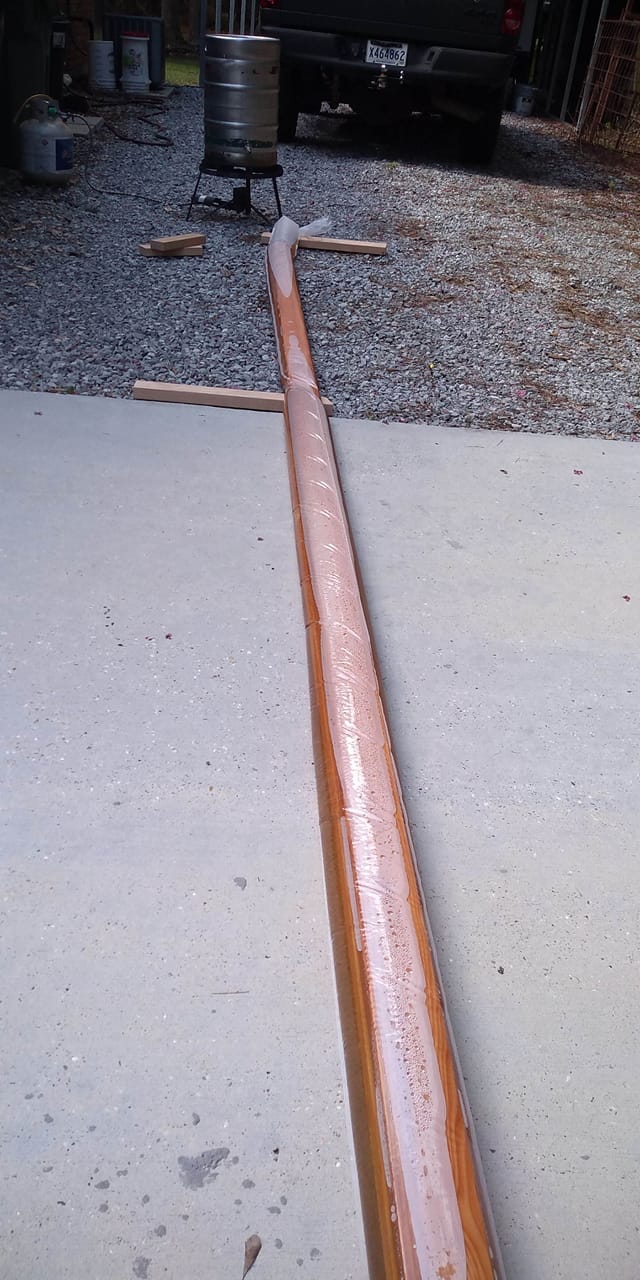Bending (Not Breaking) Chines & Sheer Clamps
Builders recommend various methods, including steam-bending
From the Glen-L Blog
This article is a summary of a recent Facebook post on the topic steaming or otherwise making chines or sheer clamps fit during the construction process. Depending on the boat design, there are times you might find a particular board is reluctant to be pulled into position. Here is the builder's original note followed by many reader suggestions:
What is the best way to bend chine logs and sheer clamps? I have already successfully bent one side into place—see photo below—but I have snapped three boards trying to get the other side fastened. I am running out of wood and ideas. Steam bending is out of the question, but I’ve considered using boiling water? Maybe using 3/4” marine ply to substitute for the Douglas Fir boards for the chine and sheer clamp? Any advice or insights will be greatly appreciated.
Suggestions from Readers:
* Wet and pre-bend them away from the boat, slightly exaggerating the bend to allow for spring back. I use three concrete blocks.
• I built my own steamer out of a 10' length of 4" PVC with capped end and my wife's clothing steamer. It worked great.
• Perhaps laminate with thin 1/4” strips and glue. It’s stronger than a single board and will flex better.
• Run them through the tablesaw and put one on. Then laminate the second one on top of it. Not only will that be easier, it'll be significantly stronger.
• Use a Spanish windlass.
• I wrapped a towel around the chines and poured boiling water on them until the wood was good and soaked—and hot. It worked very well.
• Even if hot water or steam is not an option, try wetting the piece and wrapping it in wet towels for 24 hours. Might also tie a rope to each end and pull the piece into a gentle curve while it's being soaked in wet towels.
• Put a rope on the end. Pull it shy of max and allow it to relax (overnight) Repeat until you're able to screw in place. Be patient. (Someone else suggested they use ratchet straps for same purpose)
• I use clear salt treated 5/4” decking, ripped to size. You can get clear 16’ pieces and rip them to whatever width you need for sheer clamps and chines. It bends nice, doesn’t split and lasts forever.
• Yes, when we built the Glen-L 21 we wrapped the wood in towels and ran hot water over it from the hot water heater. We also soaked the wood in the pool. The hot water over the towels worked the best. Hope this helps you out.
• This is the cheapest way to do it.
• Why is steam bending out of the question? I made one very simply out of 4" PVC pipe, some rad hose, a kettle and a camp stove.
• Here's a link to a youtube video, to build an easy streamer.
• I wrapped them in towels with light line holding them tight to the wood, then poured very hot water over them a couple of times. I bent them in a little over halfway to the stem and left them overnight. More hot water in the morning for awhile and then bent them in tight. Left them for that day, then unwrapped to dry. Fitted them and screwed them in position on 3M 5200 adhesive caulk, but used #10 panhead screws with finish washers. After a few days I replaced the panheads one at time with flatheads. Stayed busy on other parts while I patiently worked the chines into position.
• Rip them in either half (or even better, thirds longitudinally), then put them on in layers, laminating the layers with epoxy. Takes a lot of clamps, but gives you a sheer with minimal residual stress as well. Many of us have done this on many boats. Works really well. The pic shows my PM-38 with one lamination still to go.
• Bend two thinner chines, 1/2 thickness and epoxy them together with a bunch of clamps.
• I made a simple steamer. The white oak bends like a rubber band.
•SCA•







Your tips on bending in chines and sheer clamps is first-rate, IMO. But when I total up all the prep and and time to propose-build bending equipment, I have to ask why not rip stock into 3/8" to 1/2" strips and epoxy-laminate the "bent" members into place? If you rip with a good carbide-tipped planer blade, you probably wouldn't even have to surface the ripped strips (given the gap-filling properties of a properly chosen epoxy edhesive system). Just sayin'. Cheers!
I don't see anyone suggesting kerfing the wood....